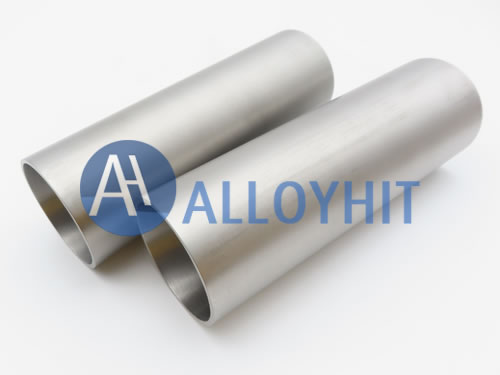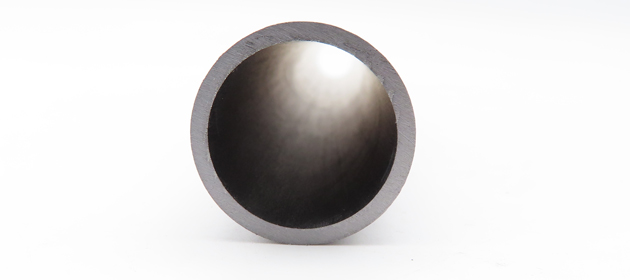
The Science Behind C103
Niobium C103 is a refractory metal alloy composed primarily of niobium (approximately 89%), with 10% hafnium and 1% titanium. This precise combination creates a material with unique properties:
Extreme temperature resistanceExcellent corrosion resistanceHigh strength-to-weight ratioGood fabricabilityLow neutron absorptionOxidation resistance.
Developed for aerospace applications in the 1960s, C103 has become the material of choice for components requiring reliable performance in extreme environments where temperatures can exceed 1800°C (3272°F).
Specifications of Niobium C103 Tube & Pipe
Our Niobium C103 Tube & Pipe are available in a range of standard sizes and can be custom manufactured to meet your specific requirements.
| Parameter | Standard Range | Custom Options | Tolerance |
| Outer Diameter | 0.125" - 4.0" (3.18mm - 101.6mm) | 0.0625" - 6.0" (1.59mm - 152.4mm) | ±0.001" (±0.025mm) |
| Wall Thickness | 0.010" - 0.250" (0.25mm - 6.35mm) | From 0.008" (0.2032mm) | ±0.0005" (±0.013mm) |
| Length | 12" - 120" (304.8mm - 3048mm) | Up to 240" (6096mm) | ±0.125" (±3.18mm) |
| Alloy Composition | Nb-10Hf-1Ti (Niobium with 10% Hafnium, 1% Titanium) | ±0.5% for major elements | |
| Surface Finish | As-drawn, Pickled, Bright annealed | Electropolished, Coated options | Up to 16 µin Ra |
| Form | Seamless, Welded | Custom bends, Coiled tubing | - |
Available Configurations
-
Seamless Tubing
For high-pressure applications requiring uniform structure and maximum strength
-
Welded Tubing
Cost-effective solution for less critical applications with lower pressure requirements
-
Coiled Tubing
Continuous lengths on spools for specialized manufacturing processes
-
Custom Fabricated
Bent, flanged, or machined configurations to your exact specifications
Quality Testing Parameters
- Ultrasonic Testing
- Hydrostatic Pressure Testing
- Visual Inspection
- Dimension Verification
- Chemical Analysis
- Mechanical Testing
- Microstructure Evaluation
Why Niobium Alloys Matter?
Niobium-based alloys like C103 fill a critical gap in high-temperature materials science,
offering advantages over other high-performance materials:
-
✔
Higher melting point than nickel-based superalloys
-
✔
Better corrosion resistance than molybdenum alloys
-
✔
Lower density than tungsten alloys
-
✔
Superior formability compared to other refractory metals
-
✔
Refractory metals are defined by their extremely high melting points,
exceeding 2000°C

Manufacturing Process of Niobium C103 Tube & Pipe
Producing Niobium C103 Tube & Pipe requires specialized processes to maintain material integrity and achieve precise dimensions.
1. Alloy Preparation
High-purity niobium, hafnium, and titanium are precisely measured and blended according to the C103 specification (Nb-10Hf-1Ti) to ensure exact chemical composition.
2. Vacuum Arc Melting
The alloy is melted in a high-vacuum environment to eliminate gas impurities and ensure homogeneous composition, creating a uniform ingot structure. Multiple melts ensure chemical uniformity.
3. Piercing & Extrusion
The ingot is heated and pierced to create a hollow billet, which is then extruded to form the initial tube shape with approximate dimensions.
4. Precision Drawing
The extruded tube undergoes multiple cold drawing passes with intermediate annealing to achieve the final dimensions and surface finish with tight tolerances.
5. Final Processing & Testing
Final heat treatment optimizes mechanical properties. Each tube undergoes rigorous testing including dimensional inspection, pressure testing, and material verification.
Manufacturing Capabilities of Niobium C103 Tube & Pipe
Material Certification Package of Niobium C103 Tube & Pipe
Chemical Analysis
Complete elemental composition verification with spectroscopy and wet chemistry analysis.
Mechanical Testing
Tensile strength, yield strength, and elongation testing with certified results.
Traceability
Complete material traceability documentation from raw material to finished product.
Contact Us
If you have any questions or needs regarding Niobium C-103 Tube products, please feel free to contact us and we will provide you with professional consulting services.

 +86 13120915623
+86 13120915623

